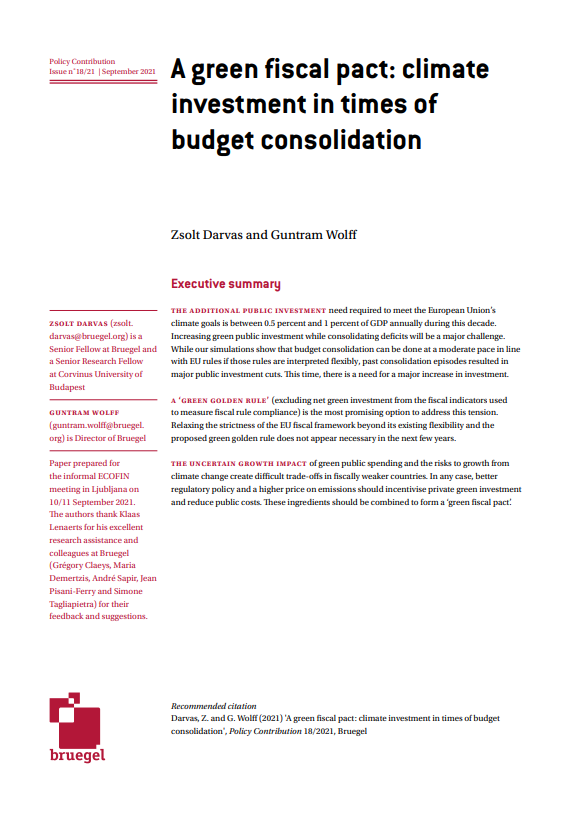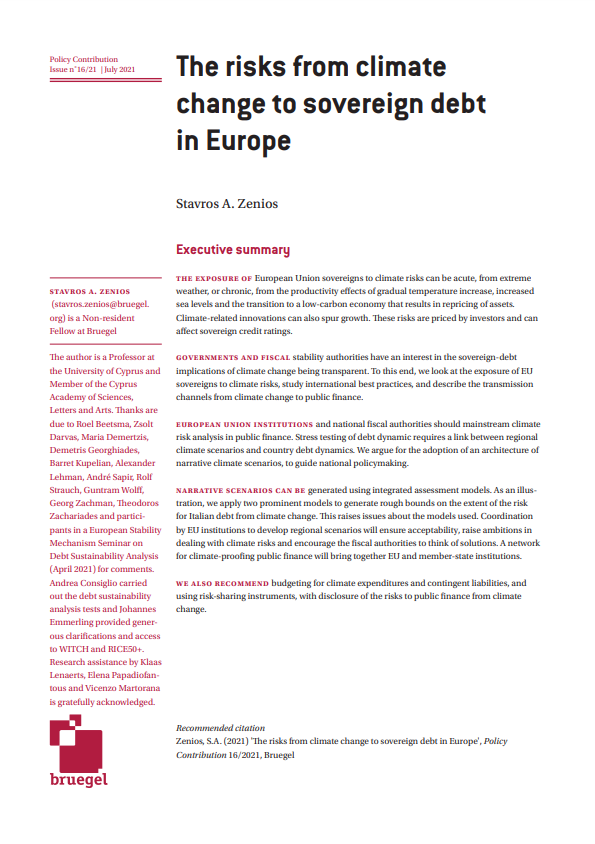Blog Post
Italy’s pension spending: Implications of an ageing population
The Italian debate on the pension system predominantly focuses on short-term aspects, neglecting relevant longer-term fundamentals. Based on long-term economic and demographic projections, this blog post calls for more awareness about the balance of risks that lie ahead.
During the euro-zone sovereign crisis, Italy – in line with other stressed countries – introduced a major pension overhaul, known as the ‘Fornero reform’, aimed at tackling the revealed unsustainability of the system.
This reform has been – and continues to be – at the centre of a long-lasting political debate in the country. This debate predominantly focuses on the short-term aspects of the system, and neglects relevant longer-term fundamentals.
With this blog post, we aim to shed light on Italy’s long-term economic and demographic trends and their implications for pension spending.
As an overall trend, total pension expenditure in Italy stood at 16.5% of GDP in 2015 – ranking second-highest in the EU28, after Greece (Figure 1).
As in every other EU country, the largest pension expense item in Italy in 2015 was old-age pensions. Interestingly, Italy’s ‘survivor pensions’ spending was the highest, in percentage-of-GDP terms, across all EU countries in the same year at 2.7% – possibly because of the relative wider coverage of those pensions (Andrle et al., 2018).
In order to understand the long-term sustainability of a pension system, it is necessary to take into consideration the underlying demographic trends.
As outlined by the European Commission’s Working Group on Ageing Populations and Sustainability (AWG), the demographic old-age dependency ratio (the number of people aged 65 or above, as a percentage of the number aged 15-64) is on an irreversibly increasing path in the whole EU.
In Italy, according to the latest report by the Ministry of the Economy and Finance (MEF), the dependency ratio will increase from 33.7% in 2015 to more than 60% in 2070 (Figure 2).
This means that while in 2015 there were roughly 34 pensioners for every 100 workers, in 2070 there would be 60 pensioners for every 100 workers. The dependency ratio is projected to peak at 63% in 2050, and then decrease to 60%.
Even if the ‘Fornero reform’ moved towards a more just intergenerational distribution of burden (Hüttl, Wilson, and Wolff, 2015), rapid ageing will likely put pressure on pension spending.
MEF projects pension spending to remain at current levels, as a percentage of GDP, until 2040 and then progressively decrease in the following decades (Figure 3). This projection is based on a series of optimistic assumptions, such as a sizeable pick-up in employment rate and a growth in real GDP per capita and real labour productivity of around 1.75% annually – far above what has been observed for the last few decades.
However, by relaxing some of the underlying assumptions and the implied economic growth profile, pension spending as a percentage of GDP would be significantly higher. We quote two alternative scenarios to capture the breath of uncertainty that surrounds these estimates.
While in 2015 there were roughly 34 pensioners for every 100 workers, in 2070 there would be 60 pensioners for every 100 workers.
Using UN population projections – which assume faster demographic deterioration in Italy by comparison to the MEF – an IMF study by Andrle et al (2018) projects that pension spending would peak at a level above 20% of GDP in 2040.This implies a four-percentage-point difference with the MEF’s pension-spending projection. As the relative share of pensioners under the notional defined contribution scheme grows, pension spending is projected to structurally decline after 2040.
Using 2018 AWG assumptions (which consider, for example, higher steady state unemployment rate), Andrle et al (2018) project Italy’s pension spending to peak at 18.4% of GDP in 2040.This implies a deviation of more than two percentage points from the MEF’s pension-spending projection.
Italy’s pension spending will reach a peak at a 20-year horizon, when most of the people born during Italy’s 1960s ‘baby-boom’ will retire.
These projections illustrate that Italy’s pension spending will reach a peak at a 20-year horizon, when most of the people born during Italy’s 1960s ‘baby-boom’ will retire. After this 2040 peak, the demographic pressure will progressively decrease as fewer people enter the pension system, reflecting the lower birth rates representative of more recent trends.
The Italian government currently contributes around 30% of its overall annual public spending (net of interest expenses) to pensions (Centro Studi e Ricerche di Itinerari Previdenziali, 2017). Both of the alternative scenarios shown above imply a deterioration of Italy’s public finances in the future (all other things being equal).
In our view, Italy’s public debate on the future of the pension system should take into consideration alternative long-term demographic and growth assumptions, to reflect a more accurate picture of the risks that lie ahead.
Republishing and referencing
Bruegel considers itself a public good and takes no institutional standpoint. Anyone is free to republish and/or quote this post without prior consent. Please provide a full reference, clearly stating Bruegel and the relevant author as the source, and include a prominent hyperlink to the original post.












